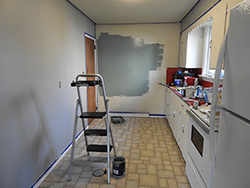 In recent years, team building has gained a foothold in corporate America as a fun and effective management tool. To be successful in the business world, employees must be able to effectively plan and execute programs as a team, communicate clearly, use resources efficiently, and be able to adapt to changing circumstances.
In recent years, team building has gained a foothold in corporate America as a fun and effective management tool. To be successful in the business world, employees must be able to effectively plan and execute programs as a team, communicate clearly, use resources efficiently, and be able to adapt to changing circumstances.
Team building is designed to do utilize these skills, in a fun environment. It can encourage out-of-the box thinking and enhance group dynamics, breaking down barriers that prevent employees from working together as a team. Activities foster decision-making, challenge resolution and leadership skills.
Exercises can be designed to encourage individuals in a group to entrust their safety in one another or to experience the exhilaration of overcoming a physical challenge. Participants return to work infused with renewed vigor. The goal is to transfer the collaborative effort, positive energy and learning that take place during a team-building activity back into the workplace.
But team building can also be a risk manager’s nightmare when activities include dangerous physical elements. Companies must consider the risks involved in such hazardous activities. They can lead to an increase in the frequency and severity of employee injuries, leaving the company vulnerable to higher workers’ compensation costs – not to mention employee lawsuits.
If team-building activities are part of your company’s management philosophy for bringing employees together to work cohesively as a group, make certain that safety is part of the equation. Consultants brought in to design such programs should know your expectations and concerns and abide by them. A company in Miami that hired a consultant for team building found that a dozen or so of its 100 employees suffered 1st and 2nd degree burns when they were forced to engage in a firewalk. The consultant called the injury rate “acceptable.”
Activities such as white water rafting, rock climbing, and paintball might not be suitable for all employees. Besides the physical hazards, planners need to consider whether or not an activity might be embarrassing for some employees. An activity that requires participants to wear a bathing suit, for example, might make some employees self-conscious and inhibit their ability to fully engage in the collaborative effort.
To promote safe team building:
Emphasize the need to exercise caution on the job and in any physical team-building exercise.
Define your needs clearly to management consultants, hired to design a team-building program.
Ensure team-building activities are properly supervised.
Stop any activity if an unsafe situation is observed.
Team building has an important place in business. Activities should focus on bringing employees together. Make team building a safe experience that everyone can participate in and enjoy.

 A flexible work schedule can help you achieve work-life balance, maximize your circadian rhythm or prepare for retirement. You may need to convince your boss that it’s a good idea, though. Use nine tips as you advocate for a flexible work schedule.
A flexible work schedule can help you achieve work-life balance, maximize your circadian rhythm or prepare for retirement. You may need to convince your boss that it’s a good idea, though. Use nine tips as you advocate for a flexible work schedule. According to the forth-quarter 2010 Principal Financial Well-Being Index, 43% of American workers cite the achievement of better overall health as the number one reason they would or do participate in a wellness benefit program. In second place, with 33%, was the reduction of personal health care costs. In third place, with 31%, was the increased chance of living a healthier and extended life.
According to the forth-quarter 2010 Principal Financial Well-Being Index, 43% of American workers cite the achievement of better overall health as the number one reason they would or do participate in a wellness benefit program. In second place, with 33%, was the reduction of personal health care costs. In third place, with 31%, was the increased chance of living a healthier and extended life. As concerns grow about the potential effects of global warming and people pay more attention to reducing their carbon footprints, green construction is becoming a larger part of the solution. A McGraw Hill study found that in 2008 the value of green construction starts might have been as high as $49 billion, and it could reach $140 billion by 2013.
As concerns grow about the potential effects of global warming and people pay more attention to reducing their carbon footprints, green construction is becoming a larger part of the solution. A McGraw Hill study found that in 2008 the value of green construction starts might have been as high as $49 billion, and it could reach $140 billion by 2013. Bidding on residential remodeling projects requires accuracy. With an accurate bid, you show your competence and make a viable living. Consider five//// tips that help you estimate an accurate remodel bid.
Bidding on residential remodeling projects requires accuracy. With an accurate bid, you show your competence and make a viable living. Consider five//// tips that help you estimate an accurate remodel bid. An electrical contractor runs miles of wiring through what will be a three-story office building. Following completion, the contractor tests the wiring, finds it satisfactory and leaves the job. After other subcontractors hang and paint the walls and do other finishing work, the general contractor tests all systems.
An electrical contractor runs miles of wiring through what will be a three-story office building. Following completion, the contractor tests the wiring, finds it satisfactory and leaves the job. After other subcontractors hang and paint the walls and do other finishing work, the general contractor tests all systems. Your construction business depends on independent contractors who may perform a variety of tasks, including demolition, installation or painting. Because your business depends on quality work performed in a timely manner, use seven tips to ensure you hire reliable independent contractors.
Your construction business depends on independent contractors who may perform a variety of tasks, including demolition, installation or painting. Because your business depends on quality work performed in a timely manner, use seven tips to ensure you hire reliable independent contractors. Our hands are used in almost all daily activities, work or leisure. But, for some reason, we often overlook just how frequently our hands are used until they are injured.
Our hands are used in almost all daily activities, work or leisure. But, for some reason, we often overlook just how frequently our hands are used until they are injured. Most employers are responsible for providing employees with Workers’ Compensation insurance. These important benefits cover your medical treatment, a portion of your lost wages, disability compensation and vocational training. However, you may need to hire a Workers’ Compensation lawyer. Follow these tips as you take this step.
Most employers are responsible for providing employees with Workers’ Compensation insurance. These important benefits cover your medical treatment, a portion of your lost wages, disability compensation and vocational training. However, you may need to hire a Workers’ Compensation lawyer. Follow these tips as you take this step. Risk management experts, safety experts, accountants, actuaries, and other professionals make the distinction between direct and indirect costs of accidents, lawsuits, and so forth. For example, the cost of turnover in the HR That Works Turnover Cost Calculator includes the direct costs (such as paying for a Help Wanted ad) and indirect costs (such not growing the business due to lack of manpower).
Risk management experts, safety experts, accountants, actuaries, and other professionals make the distinction between direct and indirect costs of accidents, lawsuits, and so forth. For example, the cost of turnover in the HR That Works Turnover Cost Calculator includes the direct costs (such as paying for a Help Wanted ad) and indirect costs (such not growing the business due to lack of manpower).




